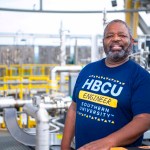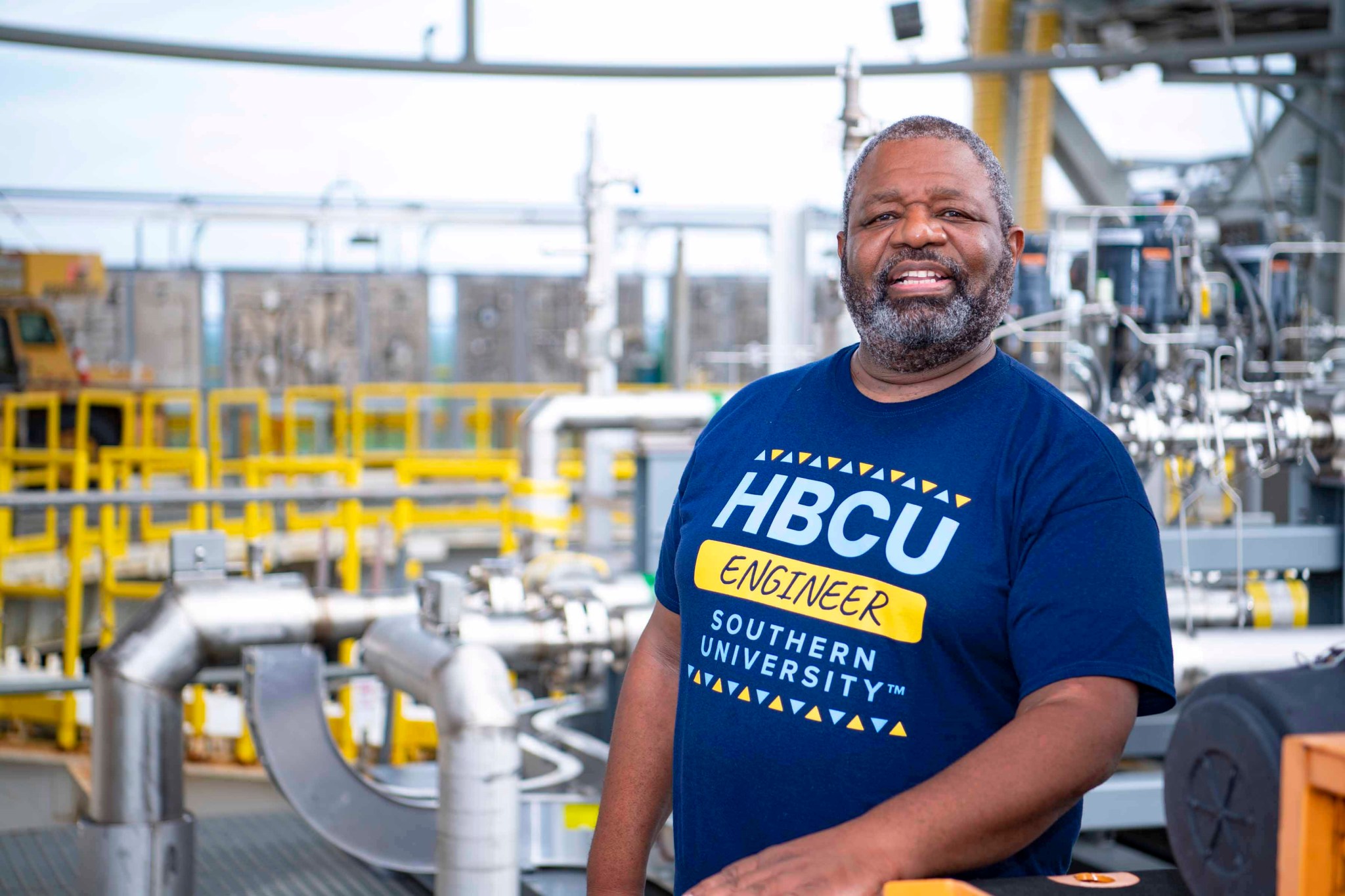I Am NASA Stennis: Barry Robinson
Barry Robinson always wanted to participate in NASA’s space program, but even he was surprised it would happen in south Mississippi, only two hours east of where he grew up in Morgan City, Louisiana.
Robinson has worked at Stennis Space Center near Bay St. Louis, Mississippi, for 32 years and now plays a vital role in NASA’s push to return to the Moon through its Artemis missions and prepare for eventual flights to Mars.
“This is the largest project of its kind to hit Stennis since the Apollo Program,” Robinson said. “Back then, Stennis tested Saturn V S-IC stages in our quest to go to the Moon. So, here we are again, at the forefront of providing transport to the Moon on the largest rocket ever built (Space Launch System or SLS) and testing RS-25 engines that will send it, here in south Mississippi, at the place made just for doing such things.
“How much more exciting can it be?”
Robinson is currently project manager for Green Run testing of the Exploration Upper Stage (EUS) that will fly on the SLS rocket for future Artemis missions. EUS, which passed its critical design review in 2020, will replace the Interim Cryogenic Propulsion Stage that is being used on initial Artemis flights. It will allow NASA to send astronauts and larger payloads to the Moon on a single mission.
Robinson also was project manager for the Green Run test series on the first SLS core stage on the B-2 Test Stand at Stennis. The series of tests on the stage’s integrated systems culminated with a hot fire of its four RS-25 engines, just as during an actual launch. The successful test series concluded in March 2021.
To better understand how Robinson made his way to Stennis, one would have to glimpse into a time period that helped develop the Slidell, Louisiana, resident – his time as a student at Southern University and A&M College in Baton Rouge, Louisiana.
“My experiences at Southern University have been invaluable in that it helped me to understand obstacles that manifest themselves in our lives are merely challenges well worth overcoming,” he said.
Robinson graduated in 1988 with a bachelor’s degree in mechanical engineering.
“Where better could you go to understand a different perspective of how diverse people – nationally, internationally, and culturally – can interact successfully in a mostly smaller, more intimate atmosphere without fear of bias or retaliation in current or future endeavors,” Robinson said.
“This exposure (at an HBCU) is a great prerequisite to a global setting for which one can thrive in business, technical fields, liberal arts, and other areas because they’ve met, talked, interacted and sometimes learned from someone different.”
Upon graduation, Robinson was hired by Rocketdyne (now Aerojet Rocketdyne) to work as test engineer for the space shuttle main engine project for four years. After serving as a development engineer for a year, Robinson was hired by NASA as test operations engineer. He spent one year as a Stennis liaison at Marshall Space Flight Center in Huntsville, Alabama, for the previous Constellation Program and space shuttle main engine project offices before returning to Stennis as an engineering project manager.
Looking ahead, I am so excited about seeing how we (in NASA) re-invent ourselves in this evolving (aerospace) industry where commercialization is playing a larger role.

barry robinson
NASA Engineer
“Being a civil servant who works for NASA in the technical aspects, and meeting people who have influenced or changed work in those areas or who are experts in a very narrow field of rocketry – how cool is that?” Robinson said. “And looking ahead, I am so excited about seeing how we re-invent ourselves in this evolving industry where commercialization is playing a larger role.”
For information about Stennis Space Center, visit Stennis Space Center.





























